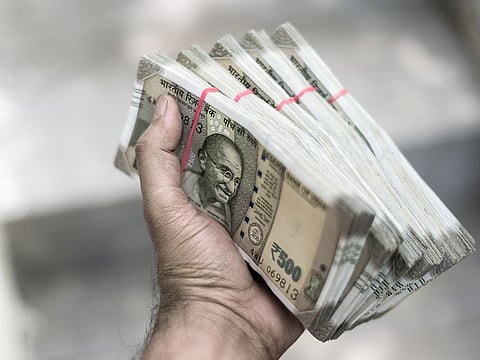UAE's Indian rupee remittances wait for another drop below 20 to a dirham
Remittances to India have not yet fully recovered from COVID-19's hit on jobs

Dubai: Higher Indian rupee remittances from the UAE might have to wait until August or September, by which time it could be in 20.15-20.28 to the dirham (74-74.50 against dollar). On Thursday (June 10), a dirham was fetching 19.87 rupees.
If so, this would be a sharp improvement on the present remittance flows to India, which had slowed considerably in the year-to-date after a prolonged slump last year. The layoff of over 150,000 Indian workers amidst the pandemic was reflected in the 17 per cent drop in remittances in 2020, according to the latest World Bank report.
At 20.15-20.28 levels to the dirham would be a “good opportunity for remittances,” said Rajiv Raipancholia, CEO of Orient Exchange and Secretary of FERG (Foreign Exchange Remittance Group).
Raipancholia reckons by August-September, the job situation would have stabilized and with the Expo providing its own impetus, higher remittance opportunities would be the natural outcome.
Faster recovery
After weakening during the start of the COVID-19 second wave in India, the rupee has since proven quite resilient. For this, the rupee had the strong dollar inflows into the country to thank for. Plus, the dollar’s weakness during the period.
The rupee has been broadly upbeat so far this month, with India recording steady drops in daily coronavirus cases. Divyanit Sood, FX Strategist at Credit Suisse, said the “rupee is likely to appreciate steadily in the near term, tracking the broader Asia FX appreciation, supported by broader dollar weakness and pickup in growth as lockdowns ease.”
A waiting game
NRIs in the UAE and Gulf will thus need to show some patience if they want to time their next round of sizable remittances when the rupee drops to well over the 20 to the dirham mark. Since early 2020, there have been multiple times when the 20 level was breached, but the rupee managed to claw its way back soon enough.
Central bank stance
The RBI’s (Reserve Bank of India) latest decision to keep interest rates unchanged is also expected to drive foreign capital inflows into India. Antony Jos, who heads the financial services division at Joyalukkas Group, said: The rupee will probably maintain the same momentum or strengthen around 72.30 over the next few months based on RBI's forecast of forex reserves crossing $600 billion on the back of robust capital inflows.” (The foreign exchange reserves have indeed crossed the $600 billion mark.)
The downward trend in coronavirus cases in India should eventually lead to a recovery from the lockdown-induced constraints on trade. This too adds to the short-term positive sentiments around the Indian currency.
Economy prospects will weigh in
But there will be other issues the rupee has to confront, notably the recovery prospects for the economy. “A normalising of trade flows and at the same time a strong inflow of FDI (foreign direct investments) will help the currency strengthen,” said Jos. “But interest rates could see a fall July if the above equation doesn’t work out well, considering the hikes in oil price and what this would do to inflation.
“This would add to the pressure on the rupee in coming months.”
If that means another breach of the 20 to the dirham status, NRIs would be waiting…
Sign up for the Daily Briefing
Get the latest news and updates straight to your inbox









